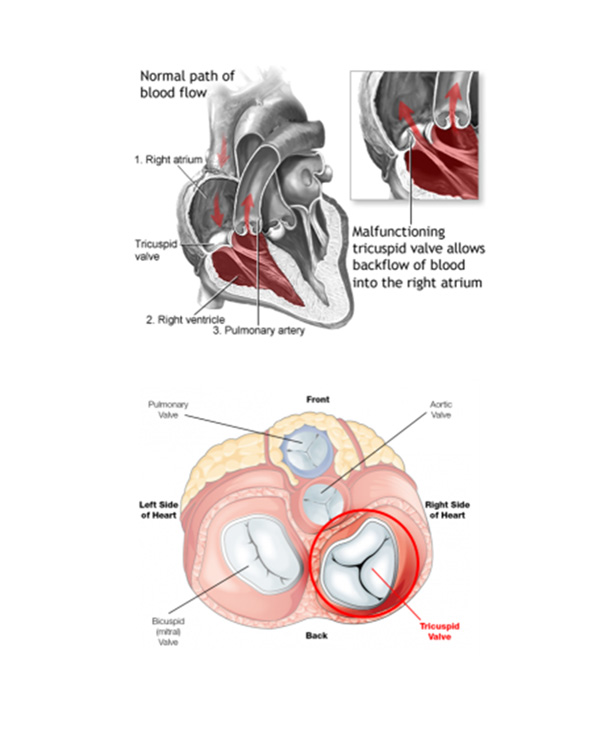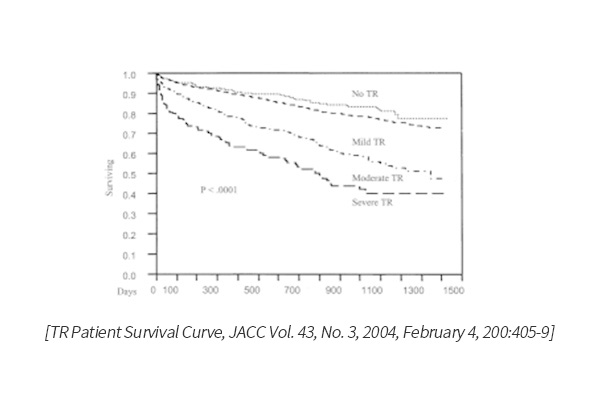
Technology
TR Croissant
TR Croissant
Tricuspid regurgitation (TR) is one of the heart valve diseases. During the systolic phase of the right ventricle, three leaflets meet each other and during the process of closing the valve opening, a space is created due to incomplete closure, which causes blood to flow from the right ventricle back to the right atrium.
Functional/Secondary TR is a disease in which valve lobes or dry cuts are normal, but due to the expansion of the right atrium/right ventricle, the annular dilatation causes the valve lobes to not gather well and regurgitation occurs. It is known that functional tricuspid regurgitation accounts for 80 to 90% of patients with severe tricuspid regurgitation (Severe TR) who require treatment.
Tricuspid valve disease has been evaluated to have a somewhat lower importance of immediate treatment compared to other heart valve diseases (aortic valve, mitral valve). But, through recent clinical experience and numerous studies, it has been reported that tricuspid regurgitation significantly lowers the quality of life of patients and the mortality rate from the disease is also high.
The one-year mortality rate for patients with severe tricuspid regurgitation (Severe TR) reaches 30%, and the mortality rate is approximately 60% after 3 years.


Tricuspid regurgitation was a forgotten valve with little surgical treatment, but its importance has been re-examined recently, and it can be applied to patients who cannot undergo an operation if accessed through a catheter.
Recently, techniques that applied the treatment technology for mitral regurgitation to the tricuspid valve are being studied, and research results have been published that prove that the reduction of tricuspid regurgitation through a catheter leads to a decrease in mortality.
Current other technologies in early clinical trial (n=268) : Mild TR only in half
It has little effect, but it is proven that TR reduction through catheter reduces mortality (big difference from surgery).

In Europe and the United States, which have the largest market sizes in the world, there are 4.7 million and 2.5 million TR patients with severe symptoms needing treatment, respectively, with 330,000 and 210,000 new TR patients each year. However, due to the complexity of the valve structure, the difficulty of the procedure, and the high risk of surgical treatment, among them, only 130,000 patients in Europe and 10,000 in the United States actually receive surgical treatment. Surgery is performed only in a small fraction of patients in need of treatment, less than 0.5%.
Since catheter-based treatment can be applied to patients who cannot undergo such surgical treatment, it is expected to have a total market of $200 billion (KRW 250 trillion) and a market of $16.5 billion (KRW 19 trillion) per year.

